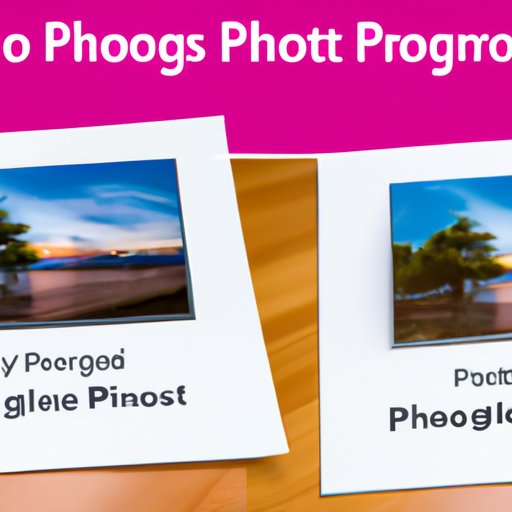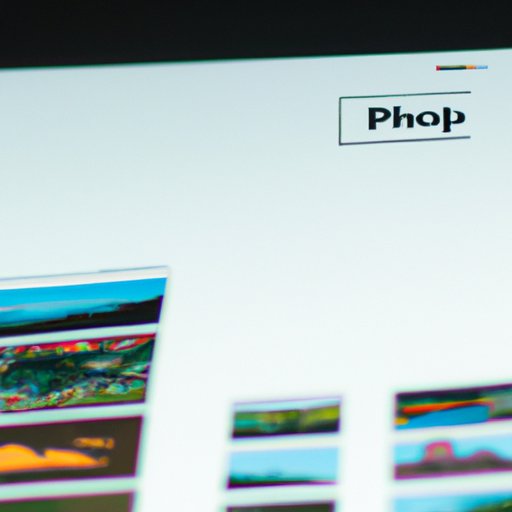Introduction
Proofs in photography are a valuable tool for photographers to help them create professional quality images. A proof is a digital or printed version of an image that is used to review and edit photographs before they are finalized. This article will provide an in-depth guide to understanding, creating and using proofs in photography.
Exploring the Basics of Proofs in Photography
Before delving into the specifics of proofs in photography, it’s important to understand what proofs are and why they are important. A proof is a digital or printed version of an image that is used to review and edit photographs before they are finalized. Proofs are essential for ensuring accuracy and consistency in a photographer’s work and can help improve client satisfaction.
There are two main types of proofs: digital and printed. Digital proofs are viewed onscreen and are typically used to review and edit images during the post-production process. Printed proofs are physical prints of images and are often used to check for accuracy before submitting final images to clients.
The importance of proofs lies in their ability to provide insight into a photographer’s work. By creating proofs throughout the creative process, a photographer is able to assess their work and make adjustments if necessary. This can help ensure that the final images meet the desired standards and expectations.

A Guide to Understanding Proofs in Photography
In order to create professional quality proofs, there are several factors that need to be taken into consideration. The first is resolution, which refers to the number of pixels in an image. The higher the resolution, the more detail the image will contain. It is important to choose the right resolution for the intended purpose of the image.
The second factor is file format. Different file formats have different advantages and disadvantages, so it is important to select the right one for the job. Common file formats for proofs include JPEG, TIFF, and PNG.
The third factor is color profiles and calibration. Color profiles are used to ensure that colors are accurately represented in an image. Calibration is the process of adjusting the color profile to match the desired result. This is important for ensuring that the colors in a proof match the final product.
The fourth factor is printing options. There are various printing options available, such as inkjet, laser, and dye-sublimation. Each option has its own advantages and disadvantages, so it is important to select the best one for the job.

How to Use Proofs to Enhance Your Photography
Proofs can be used to enhance your photography in a variety of ways. Capturing proofs during a shoot can help you review and adjust your settings and composition in real time. Using proofs to review and edit images can help you identify any flaws or discrepancies in the photos before they are finalized.
Creating professional quality proofs is also essential for ensuring accuracy and consistency in your work. By taking the time to set the correct resolution, file format, color profile, and printing option, you can create proofs that accurately reflect the final product.
The Benefits of Having Proofs in Your Photography
Having proofs in your photography can provide many benefits. One of the most important is gaining insight into your work. By reviewing proofs as you go, you can quickly identify areas that need improvement and make adjustments accordingly.
Another benefit is that proofs can help enhance your creative process. By creating multiple versions of a photo, you can experiment with different ideas and techniques to get the best results. This can help you become more efficient and effective in your work.
Finally, having proofs can improve client satisfaction. Clients can view proofs before submitting final images, which helps ensure that they are satisfied with the results. This can help build trust and loyalty between photographer and client.

Tips and Tricks for Creating Professional Quality Proofs in Photography
Creating professional quality proofs in photography requires careful consideration of several factors. Here are some tips and tricks for getting the most out of your proofs:
- Choose the right resolution for the intended purpose of the image.
- Set an accurate color profile to ensure that colors are accurately represented.
- Utilize editing software to make adjustments to the image.
- Select the best printing option for the job.
By following these tips and tricks, you can create professional quality proofs that accurately reflect the final product.
Conclusion
Proofs in photography are an invaluable tool for photographers to help them create professional quality images. This article has provided an in-depth guide to understanding, creating and using proofs in photography, as well as tips and tricks for creating professional quality proofs. By following these guidelines, photographers can gain insight into their work and improve client satisfaction.
(Note: Is this article not meeting your expectations? Do you have knowledge or insights to share? Unlock new opportunities and expand your reach by joining our authors team. Click Registration to join us and share your expertise with our readers.)
